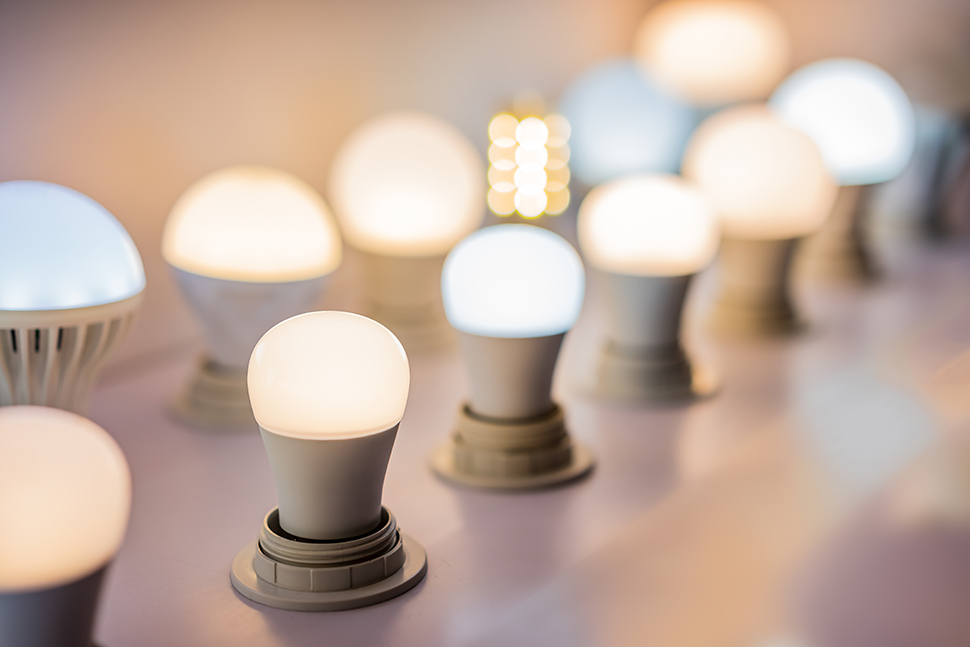By Karen Willis, Managing Director, Lighting Systems, NEMA
Lighting has been fundamental to our daily lives for millennia. Long before Thomas Edison’s birth on February 11, 1847, ancient civilizations and communities sought comfort, safety, warmth and progress in torches, flames and candles.
In the last two centuries, however, manufacturers and innovators inspired by Edison have pioneered solutions and efficiencies that have rapidly accelerated the pace and scale of progress. On the anniversary of Edison’s birth and National Inventors’ Day, we celebrate the truly illuminating tapestry of advancement that has led to today’s era of smart lighting – powered by electricity.

The Dawn of Electrification
Edison’s invention of the incandescent light bulb in 1879 – granted U.S. Patent 223,898 on January 27, 1880 – propelled rapid advancement and paved the way for widespread electrification that would transform homes and communities. By 1882, Edison launched the first central electric power station in New York City. Incandescent lighting became the dominant technology for consumers and residential use.
In the 1900s, fluorescent lighting (FL) emerged as a more energy-efficient and longer lasting alternative to incandescent bulbs. Fluorescent tubes became common in commercial and industrial spaces. In 1976, Edward Hammer discovered how to bend these fluorescent tubes and invented the compact fluorescent bulb (CFL), largely in response to the 1973 oil crisis. CFLs were the next mainstream attempt at a more energy efficient light bulb for residential use. Although more efficient and longer lasting than incandescent light bulbs, CFLs were not readily embraced by consumers who prioritized other performance factors like quality of light, dimming capabilities, and color selection.
LEDs at Scale
In the late 20th century, manufacturers delivered another revolution in lighting technology with the development of light-emitting diodes (LEDs). Initially used in electronic displays and indicator lights, LEDs offered unparalleled energy efficiency, longevity, and design flexibility and solved many of the problems consumers identified with CFL bulbs. Manufacturers played a crucial role in refining LED technology, making it a viable and sustainable option for various applications.
In the early 2000s, the development of LED lighting began at scale. Early adopters and owner-occupied buildings began to install LEDs in earnest. The U.S. Energy Star Program began to label lamps that met specific standards to reduce consumer concerns regarding product quality. Industry leaders and groups including the U.S. Department of Energy (DOE), NEMA, Environmental Protection Agency’s ENERGY STAR Program, Illuminating Engineering Society (IES) and UL began to work together to develop safety and performance standards and specifications for general service LEDs. In 2009, UL published UL8750, the first standard for LED Equipment for Use in Lighting Products.
A Bright Path Forward
In 2005, Congress recognized the potential of LEDs and codified the Next Generation Lighting Industry Alliance (NGLIA) to foster industry-government partnership to accelerate the technical foundation and commercialization of high-performance solid-state lighting systems.
Today, the NGLIA promotes the understanding, implementation, and adoption of semiconductor light sources in specialty and general lighting systems. Alongside DOE and the lighting industry as a whole, the group seeks to continuously improve the quality and efficiency of lighting through science and engineering to ensure the next generation of lighting becomes a reality.
Thomas Edison almost certainly would not recognize the lighting innovations of today. His incandescent bulb, capable of producing 1 lumen per watt for 40 hours, is a far cry from the 120+ lumen per watt capability of today’s LEDs, which offer better performance, longer life (10,000+ hours), increased capabilities, and increased systems integration.
The data and impact are clear: Lighting as a portion of overall energy consumption in commercial buildings dropped from 20% in 2010 to 10% in 2018. No other appliance or type of equipment has come close to achieving these cumulative cost savings: $14.7 billion, according to DOE’s 2018 estimate.1 NEMA estimates that market penetration of LED A-line lamps represented close to 80% of installed light bulbs in 2022, and forecasts an increase to greater than 90% for 2023.
In addition, DOE’s current rulemaking for LED general service lamps is expected to mandate improved performance and energy efficiency for consumers at levels Edison could not possibly have imagined.
Thanks to the contributions and innovations of manufacturers, incandescent and fluorescent lamps are being phased out globally – and LED lighting has a bright future. Manufacturers are integrating technologies to enhance efficiency and enable consumers to control their experience. Smart bulbs, connected to mobile devices or home automation systems, allow users to customize lighting levels, colors, and schedules.
Sustainable materials, wireless communication, and innovative design are making energy efficiency achievable and reinforcing the role of manufacturers in shaping a brighter, electrified future.